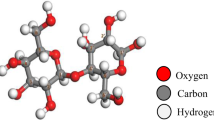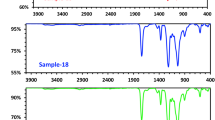Abstract
THE course of the thermal breakdown of the nitrocellulose molecule is not well understood. Previous studies of the chemical kinetics of the reaction have been carried out on the solid, and so have been hampered by the need to pyrolyse at low temperatures to reduce self-heating; and it is not certain how far the kinetics of gas evolution are complicated by reactions of the primary products, which probably include nitrogen peroxide. Further, the value of 46.7 kcal./mole recently found for the activation energy of the primary step by Wilfong, Penner and Daniells1 is difficult to understand in the light of Phillips's demonstration2 that the typical value for organic nitrates is 36–40 kcal.
This is a preview of subscription content, access via your institution
Access options
Subscribe to this journal
Receive 51 print issues and online access
$199.00 per year
only $3.90 per issue
Buy this article
- Purchase on Springer Link
- Instant access to full article PDF
Prices may be subject to local taxes which are calculated during checkout
Similar content being viewed by others
References
Wilfong, R. E., Penner, S. S., and Daniells, F., J. Phys. Coll. Chem., 54, 863 (1950).
Phillips, L., Nature, 160, 753 (1947).
Robertson, A. J. B., J. Soc. Chem. Indust., 67, 221 (1948).
Robertson, A. J. B., Trans. Farad. Soc., 45, 85 (1949).
Desmaroux, J., Mem. des Poudres, 29, 189 (1939).
Author information
Authors and Affiliations
Rights and permissions
About this article
Cite this article
SMITH, R. Pyrolysis of Dissolved Nitrocellulose. Nature 170, 844–845 (1952). https://doi.org/10.1038/170844a0
Issue Date:
DOI: https://doi.org/10.1038/170844a0
This article is cited by
-
Kinetics of heat release in the condensed phase of pyroxylin at elevated temperatures
Journal of Applied Mechanics and Technical Physics (1972)
Comments
By submitting a comment you agree to abide by our Terms and Community Guidelines. If you find something abusive or that does not comply with our terms or guidelines please flag it as inappropriate.



